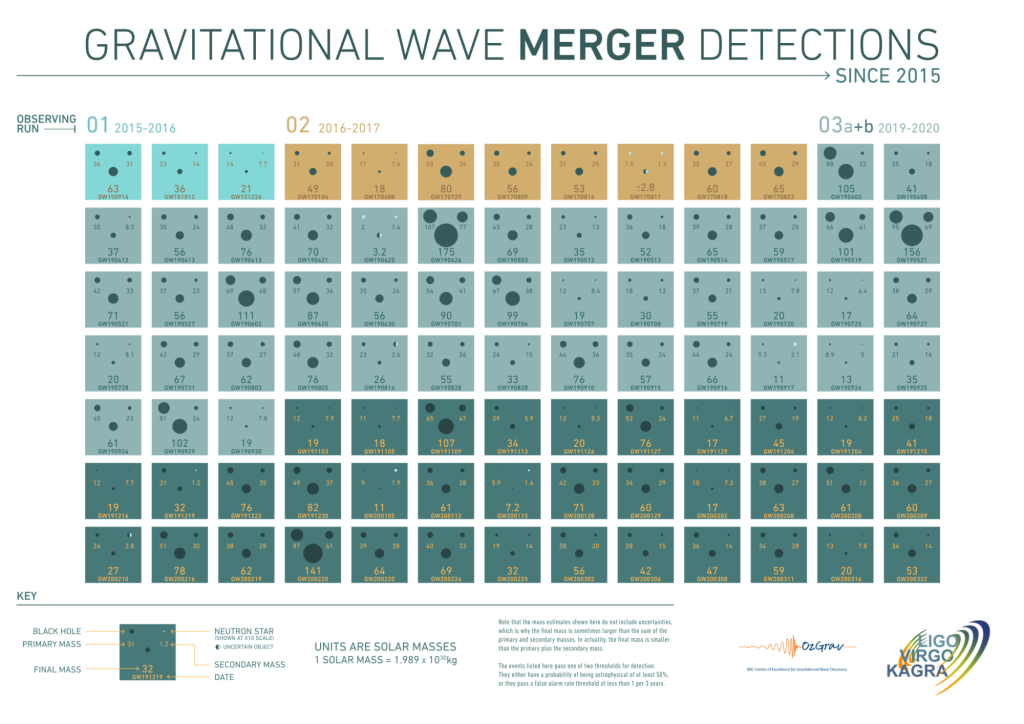Catalog of Gravitational Wave Events
All the gravitational wave sources that we detected so far are collected in the Gravitational Wave Transient Catalog (GWTC). The GWTC is a cumulative catalog, it is updated with new gravitational wave sources at the end of each of our observing runs (or at some point during a run). The GWTC contains not only the gravitational wave sources detected in a given run, but also all the scientific results, such as masses and distance estimates for the binaries. All the scientific contents released with GWTC can be downloaded from the Gravitational Wave Open Scienc Center (GWOSC).
GWTC-3 is our last gravitational wave transient catalog and it includes the gravitational wave events detected from the first, second and third (the last one) observing runs. Beside the first binary black hole merger observation, GW150914, and the multi-messenger observation of a Binary Neutron star merger GW170817, GWTC-3 presents all the gravitational wave events observed so far.
Indeed the total number of sources present in GWTC-3 is 90! Fig.1 gives us a quick overview of all the gravitational wave sources present in the GWTC divided by the observing run they were detected. The amazing increase of detection rate is due to the significant experimental improvement of our detectors sensitivity that allows us to detect gravitational wave signals further and further in the cosmos.
Here are some interesting and unexpected events included in the GWTC-3 Catalog:

- GW190412: this signal was produced by a coalescing binary black hole system with unequal masses, one component being more than 3 times heavier than the other one (30 and 8 times the mass of the Sun). The mass difference produced specific signal modulations that were predicted by theory, but never before observed.
- GW190425: The merger that originated this signal could be a binary neutron star merger or a merger in which at least one object is a black hole. Either way it would have been a considerably different system to all those known in our galaxy, in terms of mass range of the objects involved.
- GW190521: the merger of two black holes resulting in a remnant black hole of about 150 solar masses. We never observed such massive black holes, which might represent the missing link between stellar-mass black holes and the supermassive black holes observed at the center of the galaxies.
- GW190814: one of the objects involved in this merger has a mass of about 2.6 solar masses, i.e. within the so-called ‘mass gap’, a range of masses apparently too light for a black hole and too heavy for a neutron star. The nature of the object itself remains mysterious, since the gravitational-wave observations alone do not allow us to distinguish whether it is a black hole or a neutron star.
- GW200105 and GW200115: two events that represent the first ever observations of gravitational waves generated by a mix of neutron stars and black holes. Each was created by the last few decaying orbits, before the merging, of a neutron star-black hole pair.